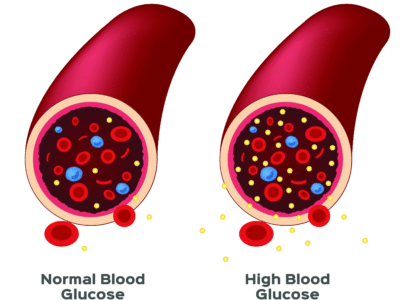Function Health vs. Quest Diagnostics: Understanding Key Differences
Article at a Glance
- Function Health is an innovative health tech platform that allows users to bypass physicians and pay out-of-pocket for advanced lab testing.
- Function is not an at-home test kit company. Because Function has partnered with Quest as its lab partner, users of the platform will still need to visit a Quest Diagnostics lab for a blood draw.
- Function is best suited to those who don’t have insurance, who have coverage that doesn’t cover more advanced testing, or who prefer the elegant user experience and “interpretive layer” Function has built into its product.
- I am a Function user and trust the product. Some Function users may benefit from genetic testing prior to their blood draw so they have a solid understanding of their baseline predispositions.

When I visit my cardiologist, which usually happens quarterly, he writes what is known as a requisition slip, which lists all the tests we will order for that visit’s blood draw.
I sit down in the chair, get my veins ready, and boom, my blood draw takes place with the phlebotomist. My doctor uses Quest Diagnostics as his preferred lab, meaning this is where my vials of blood are sent after the draw.
My insurance covers most of these blood draws, but often I get a residual bill for around $20.00 for the tests that weren’t covered.
Should I be using Function Health instead of Quest for these quarterly draws?
Maybe.
Let’s break down who may want to go that route and who will want to rely on a traditional process instead.
Function Health vs. Quest Diagnostics
| Function | Quest | |
|---|---|---|
| Physician Required | No | Usually, yes |
| Covered by Insurance | No | Yes, with scrutiny |
| Test Accessibility | 100+ tests via annual draw | Extensive, doctor must order |
| Ease of use | Easy to use dashboard | Requires clumsy portal, doctor sending results |
| UX | Polished and intuitive | Built for doctors |
| Customization | Preset with add-ons | Fully customizable with doctor |
| Advanced biomarkers | Includes rare/early detection | May require special request from doctor |
| Cost structure | $499 annual plus add-ons | Varies by insurance |
| Lab | Quest Diagnostics | Quest Diagnostics |
I am writing a separate review on Function Health, a new health tech company backed by Dr. Mark Hyman, that offers direct to consumer blood testing, but in this post I want to help clear up confusion about how these test work, and what we should (or shouldn’t) be paying.
Function Health offers advanced testing without a physician intermediary, and also without the insurance coverage. I paid $499 out of pocket as part of an annual membership to test the service so I could give an intelligent answer if a friend or Gene Food user asked me about it (which many have).

Get Started With Personalized Nutrition
Gene Food uses a proprietary algorithm to divide people into one of twenty diet types based on genetics. We score for cholesterol and sterol hyperabsorption, MTHFR status, histamine clearance, carbohydrate tolerance, and more. Where do you fit?
Understanding the offering
The thing to understand is that Function Health doesn’t offer lab testing that is exclusive to their platform, all of the tests offered through Function are available through LabCorp or Quest Diagnostics, it’s just to access the panels, the user needs a doctor to order the tests and needs insurance to sign off for coverage.
Function Health is an important innovation, and a necessary entrant to the marketplace, because it democratizes a system long mired in red tape. I want to walk our community through the logistics of how this all works, because many find it quite murky.
When I completed my recent Function Health order, I had a little chuckle when I saw where my draw would take place – Quest Diagnostics. As does my cardiologist, Function Health uses Quest Diagnostics as its lab partner, so I will be traveling to a nearby Quest Lab to get the blood drawn in two visits.

So whether you have a blood draw covered by insurance, or if you decide to use Function Health, both roads lead to a local lab.
Function is not an at-home test company like Everylwell or Viome, or even Gene Food.
It comes down to insurance
As I mentioned above, not all of the tests I receive through my physician are covered by my insurance, and I have a good PPO plan.
If money is tight, you already have excellent insurance, and you work with a doctor that can walk you through your results, it may be better to go the traditional route and get a lengthy requisition slip that matches Function’s offering (or at least does so closely).
However, if you want a cleaner experience and more autonomy, and don’t want a go-between standing in the way of your testing, Function is an excellent tool.
Waiting to get test results from Quest, sent through my physician’s office is always slow, and somewhat frustrating. I get a consult to go over the results, but the process is clunky.
By contrast, the excellent Function interface and thoughtful user experience are a breath of fresh air and will be sure to make a lot of “health nerds” pay out of pocket to use Function as our “interpretation layer” for advanced biomarkers.

Gerald Dropped His LDL-C by 100 Points With Diet Alone
Gerald was an ultramarathon runner, but despite his dedication to fitness, he was struggling with rising cholesterol levels, increasing blood pressure, and low energy.



